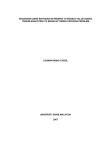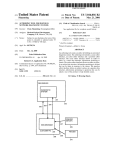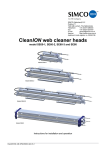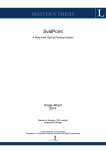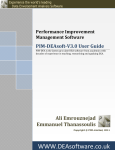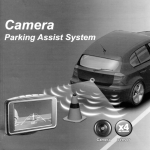Download Device and method for identifying causes of web breaks in a printing
Transcript
US006098063A
United States Patent [19]
[11]
Patent Number:
Xie et al.
[45]
Date of Patent:
[54]
DEVICE AND METHOD FOR IDENTIFYING
4,532,500
CAUSES OF WEB BREAKS IN A PRINTING
SYSTEM ON WEB MANUFACTURING
ATTRIBUTES
[75]
Inventors: Zhenhua Xie, Naperville; Did Bun
Wong, Glen Ellyn, both of 111.; Robert
Evans, Gallatin, Tenn.
7/1985
6,098,063
*Aug. 1, 2000
Henk ..................................... .. 340/675
(List continued on neXt page.)
OTHER PUBLICATIONS
Kasunich et al., Gravure Process and Technology, Chs. 4,
6—9, 11—13, 15, pp. 37—64, 99—241, 259—362, 379—398
(Brett Rutherford ed. 1991).
Quinlan, C45: Programs for Machine Learning (1993).
[73] Assignee: R. R. Donnelley & Sons, Lisle, 1ll.
Letter to applicant from Integral Solutions Limited, dated
[*]
Apr. 27, 1992.
Bareiss et al., Supporting Start—to—Finish Development of
Knowledge Bases, 4 Machine Learning, pp.. 259—283
Notice:
This patent issued on a continued pros
ecution application ?led under 37 CFR
1.53(d), and is subject to the tWenty year
patent term provisions of 35 U.S.C.
(1989).
(List continued on neXt page.)
154(a)(2).
Primary Examiner—Tariq R. Ha?z
Assistant Examiner—Wilbert L. Starks, Jr.
[21] Appl. No.: 08/846,890
[22] Filed:
May 1, 1997
Attorney, Agent, or Firm—Marshall, O’Toole, Gerstein,
Murray & Borun
[57]
Related US. Application Data
[63]
ABSTRACT
Continuation-in-part of application No. 08/196,707, Feb. 15,
A device and method that determine conditions under Which
1994, Pat. No. 5,694,524.
a break in a Web of a printing system is more likely to occur
store data pertaining to one or more attributes associated
[51]
[52]
Int. Cl.7 .................................................... .. G06F 17/00
US. Cl. ............................................... .. 706/60; 706/48
With the manufacture of each Web used in a plurality of
printing runs. The device and method then implement a
[58]
Field of Search ................................ .. 706/23, 12, 48,
correlation analysis, such as a decision-tree induction
706/60
[56]
References Cited
attributes and the occurrence of a Web break. The device and
method may store Web manufacturing data indicating one or
more of a mill site, a Web manufacturing machine, a date, a
U.S. PATENT DOCUMENTS
Re. 31,312
3,822,838
7/1983
Eddens ............................... .. 73/862.48
7/1974 Butler, Jr. et 211.
242/7544
3,928,844
3,950,988
12/1975
4/1976
Meihofer ................................. .. 226/11
Nowisch et a1. ........................ .. 73/144
4,130,014
12/1978
Eddens
.. ... ... ..
4,186,309
1/1980 Gnuechtel
4,335,316
6/1982 GlanZ et a1. ..
4,359,178
. . . . ..
73/144
250/561
reel number, a reel set, a log position, any auxiliary Web
manufacturing equipment, a Web tensile strength, a Web
moisture content and/or a coefficient of friction associated
With the manufacture of the Webs used in the plurality of
printing runs.
250/559.4
11/1982 Hayashi et a1. ......................... .. 226/25
SPECIFY A PARTICULAR
RESULT OR PROBLEM
analysis, using the stored data to determine if there is a
correlation betWeen the one or more Web manufacturing
39 Claims, 8 Drawing Sheets
@
32
ASSOCIATED WITH A
PROCESS
LOCATE PATH WITHIN INDUCTION
DEFINE CLASSES BASED ON
PARTICULAR RESULT IS MORE
LIKELY TO OCCUR THAN NOT
TREE INDlCATING THAT THE
G)
f“
THE OCCURRENCE OF THE /34
PARTICULAR RESULT
ADD ELEMENTS OF THE
/5O
PATH TO SOLUTION
IDENTIFY PROCESS
ATTRIBUTES WHICH
POTENTIALLY AFFECT THE
PARTICULAR RESULT
DEFINE CLASS AND
6
a
CONTEXT HEURISTICS
A'ITI'RIBUTE FOR A NUMBER
OF RUNS OF THE PROCESS
AND [NDICATE THE CLASS
OF EACH RUN
/64
SATISFIED WITH
SOLUTION?
ATTRIBUTES
ADD/CHANGE/DELETE l6
COLLECT DATA
ASSOCIATED WITH EACH
IDENTIFY NEW
[40
HEURISTICS
2
'—
COLLECT DATA FOR 160
ADDITIONAL RUNS <—
OF THE PROCESS
INCORPORATE SOLUTION INTO
[70
PROCESS CONTROL
I
MONITOR PROCESS
1s OUTCOME OF
PROCESS DESIRABLE?
[72
NO
6,098,063
Page 2
AN GOSS KnowledgeSEEKER, Version 3.0, User’s Guide,
US. PATENT DOCUMENTS
4,716,978
1/1988 Wales et al. ............................ .. 177/25
4,752,897
6/1988 Zoeller et al.
4,892,426
1/1990
4,959,040
9/1990 Gardner et al.
4,961,089
10/1990 JamZadeh ........ ..
5,036,706
8/1991 Gnuechtel et al.
5,136,686
8/1992
5,162,119
702/40
Steele .......... ..
400/708
474/103
399/165
73/597
KoZa ....................................... .. 395/13
11/1992 Pappas et al. .......................... .. 425/92
5,188,028
2/1993
5,243,408
9/1993 Whitman, III
Reichel ....... ..
101/228
356/430
5,266,995 11/1993 Quadracci et al.
5,269,222
5,280,720
5,282,261
1/1994
5,285,238
2/1994 Quadracci et al.
5,301,866
4/1994
Skeirik
.. ... ... ... ...
5,325,445
6/1994 Herbert
Veh et al.
..........
7/1994 Breton et al. .
10/1994 Kl'ibert et al. .
5,365,796
11/1994
5,365,844
11/1994 Miyashige .
1/1995
Lin et al.
. . . . ..
. . . ..
......
. . . ..
om ............. ..
5/1996
Karis ............... ..
5,534,281
7/1996 Pappas et al.
5,652,388
7/1997 Callan et al. .
5,694,524
5,781,195
5,791,541
12/1997
Evans
. ... ... ... ..
125—161 (1980).
Musen, Automated Support for Building and Extending
Expert Models, 4 Machine Learning 347—375 (1989).
Shannon et al., The Mathematical Theory of Communica
tion, pp. 1—5, 30—64 (1963).
Tan et al., Two Case Studies in Cost—Sensitive Concept
Acquisition, in Proceedings of the Eighth National Confer
ence on Arti?cial Intelligence, 854—860 (1990).
101/228
Walsh, Handbook of Nonparametric Statistics, pp. 10, 50,
194—195, 290, 300 (1962).
250/571
Weiss et al. Computer Systems that Learn, Chs. 5—7, pp.
395/75
355/132
113—203 (1991).
Anderson, The Adaptive Character of Thought, pp. 1, 5—40
73/862
364/551.01
426/383
. . . . ..
(1990).
Recursive Partitioning Skeleton Code, pp. 1—2 (1990).
Michalski et al., Learning by Being Told and Learning From
Examples: An Experimental Comparison of the Two Meth
ods of Knowledge Acquisition in the Context of Developing
an Expert System for Soybean Disease Diagnosis, 4 Inter
national Journal of Policy Analysis and Information Systems
226/11
101/228
73/862
5,414,708 5/1995 Nigawara et al.
5,457,515 10/1995 Quadracci et al.
5,521,844
706/23
Buntine, Recursive Partitioning Skeleton Code, pp. 1—2
355/77
382/225
5,325,774
5,357,812
5,378,918
355/77
12/1993 Johnson et al. ....................... .. 101/228
1/1994 Heidt ....................................... .. 73/159
published by ANGOSS Software Intl., Ltd. (1984—1994).
(1990).
73/628
Fayyad et al., On the Handling of Continuous—Valued
706/12
Attributes in Decision Tree Generation, 8 Machine Learn
7/1998 Marvin ........ ..
345/428
8/1998 Jitsuishi et al. ......................... .. 226/40
ing, pp. 87—102 (1992).
OTHER PUBLICATIONS
Mantaras, A Distance—Based Attribute Selection Measure
for Decision Tree Induction, 6 Machine Learning, pp. 81—92
Clark et al., The CN2 Induction Algorithm, 3 Machine
Padalkar et al., Real—Time Fault Diagnostics, IEEE Expert
Learning, pp. 261—283 (1989).
Draper, Assessment and Propagation of Model Uncertainty,
(draft version), in Proceedings of the Fourth International
75—85 (Jun. 1991).
Workshop on Arti?cial Intelligence and Statistics, pp.
497—509 (1993).
Edelstein, Mining for Gold, 6 pgs. (Apr. 21, 1997).
(1991).
Quinlan, Induction of Decision Trees, 1 Machine Learning,
pp. 81—106 (1986).
Shavlik et al., Symbolic and Neural Learning Algorithms:
An Experimental Comparison, 6 Machine Learning, pp.
111—143 (1991).
Simoudis, Reality Check for Data Mining, IEEE Expert, pp.
Smith et al., Categories and Concepts, Chs. 1, 2, 8, pp. 1—21,
25—33 (Oct. 1996).
Buntine, Review and Questions on Learning Decision Trees,
162—182 (1981).
Weiss et al., An Empirical Comparison of Pattern Recog
nition, Neural Nets, and Machine Learning Classi?cation
Methods, Proceedings of the Eleventh International Joint
Turing Institute, pp. 1—6 (Oct. 1989).
Chou, Optimal Partitioning for Classi?cation and Regres
Fisher, Knowledge Acquisition Via Incremental Conceptual
Buntine, Operations on Counting Tables, Turing Institute,
pp. 1—4 (Oct. 1989).
Conference on Arti?cial Intelligence, pp. 781—787 (1989).
sion Trees, 13 IEEE Transactions on Pattern Analysis and
Clustering, 2 Machine Learning, pp. 139—172 (1987).
Machine Intelligence, pp. 340—354 (1991).
Buntine, Learning Classi?cation Trees, RIACS & NASA
Ames Research Center, pp. 1—25 (Nov. 1991).
Rich, Arti?cial Intelligence, (1983).
Mingers, An Empirical Comparison of Pruning Methods for
Oliver, Decision Graphs—An Extension of Decision Trees
(1989).
(Draft), Monash University, Australia, pp. 1—13 (Dec. 15,
Whitehall et al., CAO: A Machine Learning Tool for Engi
1992).
neering, vol. 5, No. 4, Arti?cial Intelligence in Engineering,
pp. 189—198 (1990).
Schlimmer, Incremental Adjustment of Representations for
Learning, Proceedings of the Fourth International Workshop
Buntine et al., Introduction to IND Version 2.1 and Recur
sive Partitioning, IND User’s Manual, NASA Ames
Research Center, Dec. 31, 1992 (including a one page
summary of IND Version 2.0 and a two page summary of
modi?cations to IND Versions 0.1 to 2.1).
Buntine, Tree Classi?cation Software, presented at The
Third National Technology Transfer Conference and Expo
sition, Baltimore, pp. 1—10 (Dec. 1992).
W.F. Punch III ed., New NASA Software, Expert New
Products, p. 97 (Aug. 1993).
XpertRule® AnalyserTM Knowledge from Data, User’s
Guide (Release 2), published by Attar Software (1994).
Decision Tree Induction, 4 Machine Learning, pp. 227—243
on Machine Learning, pp. 79—90 (1987).
Lu et al., A Machine Learning Approach to the Automatic
Synthesis of Mechanistic Knowledge for Engineering Deci
sion—Making, 1 AI EDAM, pp. 109—118 (1987).
Buntine et al., Interactive Induction, 12 Machine Intelli
gence 121—137 (Hayes—Michie et al. eds. 1990).
Clark et al., Using Qualitative Models to Guide Inductive
Learning, Proceedings of the Tenth International Machine
Learning Conference, pp. 49—56 (1993).
6,098,063
Page 3
Irani et al., Applying Machine Learning to Semiconductor
Integral Solutions Limited, Catalyst Catalog, p. 47 (1991).
Manufacturing, IEEE Expert, pp. 41—47 (1993).
Kerber, ChiMerge: Discretization 0f Numeric Attributes,
Wang et al., A Brain Tumor Diagnostic System with Auto
matic LearningAbilities, Proceedings of Third Annual IEEE
Symposium on Computer—Based Medical Systems, pp.
Proceedings of the Tenth National Conference on Arti?cial
Intelligence, pp. 123—127 (1992).
Porter et al., Concept Learning and Heuristic Classi?cation
in Weak—Theory Domains, 45 Arti?cial Intelligence, pp.
229—263 (1990).
Evans, An Application of ID3 Using Real Valued Features,
313—320 (Jun. 1990).
Simpson, W.R.; Sheppard, J .W., The Multicriterion Nature
of Diagnosis, Proceedings, IEEE Systems Readiness Tech
nology Conference, pp. 389—395, Sep. 20, 1993.
(1991).
Hunt, K. 1., Induction of Decision Trees for Rule Based
Modelling and Control, International Symposium on Intel
Induction, IEEE EXpert, pp. 60—66 (1994).
Brochure by Integral Solutions Limited, ISL—Ru1es—A
Powerful Tool for Generating Embeddable Rules (1989).
ligent Control, 1992, Proceedings of the 1992 IEEE, pp.
306—311, Aug. 11, 1992.
Evans et al., Overcoming Process Delays With Decision Tree
Letter to applicant from Infolink Decision Services Limited,
dated Jan. 27, 1994.
Love, Daniel J ., Failure Analysis of LoW—Vo1tage PoWer and
Control Circuits, IEEE Transactions on industry applica
tions, vol. 27, No. 5, Sep. 1, 1991.
U.S. Patent
t
Aug. 1,2000
QMSJOWFZU
Sheet 1 0f8
6,098,063
U.S. Patent
20
K’
Aug. 1,2000
25
Sheet 2 0f8
6,098,063
\KEYBOARD
21\ COMPUTER
22\~_ MEMORY —>
l
23\ DISPLAY
FIG. 2
STORAGE /24
PRINTING
DEVICE
/25
U.S. Patent
Aug. 1,2000
Sheet 3 0f8
6,098,063
SPECIFY A PARTICULAR
RESULT OR PROBLEM
[32
ASSOCIATED WITH A
PROCESS
I
DEFINE CLASSES BASED ON
THE OCCURRENCE OF THE /34
PARTICULAR RESULT
I
IDENTIFY PROCESS
ATTRIBUTES WHICH
[36
POTENTIALLY AFFECT THE
PARTICULAR RESULT
I
DEFINE CLASS AND
{
38
CONTExT I-IEURISTICS
/6 4
IDENTIFY NEW
ATTRIBUTES
'
I
COLLECT DATA
ADD/CHANGE/DELETE
ASSOCIATED WITH EACH
[40
HEURISTICS
/62
4.
ATTRIBUTE FOR A NUMBER
OF RUNS OF THE PROCESS
AND INDICATE THE CLASS
COLLECT DATA FOR £0
OF EACH RUN
ADDITIONAL RUNS
+
OF THE PROCESS
BUILD AN INDUCTION TREE
46\ DECISION
OUTPUT OK?
No
FIG. 3A
U.S. Patent
Aug. 1, 2000
Sheet 4 0f 8
O
(B)
LOCATE PATH WITHIN INDUCTION
TREE INDICATING THAT THE
/48
PARTICULAR RESULT IS IvIORE
LIKELY TO OCCUR THAN NOT
Ir
ADD ELEMENTS OF THE
/50
PATH TO SOLUTION
SATISFIED WITH
SOLUTION?
INCORPORATE SOLUTION INTO
/7o
PROCESS CONTROL
-——>
IvIONITOR PROCESS
IS OUTCOME OF
PROCESS DESIRABLE?
FIG. 3B
6,098,063
[72
U.S. Patent
Aug. 1,2000
SELECT NEXT /
NODE
106
Sheet 5 0f8
@
REPORT DATA /
6,098,063
102
SUMMARY
104
TERMINATION
CONDITION OR USER
TERMINATES?
PARITION ATTRIBUTE VALUES INTO
VALUE GROUPS. COMPARE
107
/
ATTRIBUTES TO CLASS HEURISTICS
I
CALCULATE AND REPORT INFO
[108
GAIN FOR ALL ATTRIBUTES ACTIVE
WITHIN CONTEXT HEURISTICS
110
ARE THERE ATTRIBUTES
WITH POSITIVE INFO GAIN?
USER SELECTS ATTRIBUTE WITH /112
POSITIVE INFO GAIN
+
DEFINE NEW NODES FROM
/114
ATTRIBUTE VALUE GROUPS
II
4
SELECT A NEW NODE. DETERMINE /116
DATABASE FOR THE NEW NODES
U.S. Patent
Aug. 1, 2000
@
6,098,063
Sheet 6 0f 8
156
SELECT ATTRIBUTE ACTIVE
WITHIN CONTEXT HEURISTICS
HAVE ALL
122
ATTRI BUTES
BEEN
SELECTED?
IS SELECTED
ATTRIBUTE REAL VALUED?
NO
FORM DATA SET
S1 = ALL ATTRIBUTE VALUES OF C1
S2 = ALL ATTRIBUTE VALUES OF C2
/130
+
SORT S1 AND S2 IN
ASCENDING ORDER
V
DETERMINE MEDIANS
M1 OF S1
M2 OF S2
P
SWITCH
LABELS
,142
S1 <—> S2
M1 <—> M2
M81 = M1
M82 = M2
6)
143
/
FIG. 5A 6)
YES
U.S. Patent
Aug. 1, 2000
6,098,063
Sheet 7 0f 8
@
REDEFINE DATA SETS
S1 = ALL 81 VALUES
>= MS1
82 = ALL 82 VALUES
<= MS2
M1 = MS1
4
M2 = M82
I
PARTITION
ATTRIBUTES INTO
VALUE GROUPS
USING NATURAL
CATEGORIES
DETERMINE MEDIANS
M81 FOR 81
,126
/ 146
M82 FOR 82
PARTITION ATTRIBUTE
VALUES INTO VALUE
GROUPS USING M1 AND M2
AS BREAK POINTS
/
ARE CLASSES
ASSOCIATED WITH THE VALUE
GROUPS CONSISTENT WITH THE
CLASS HEURISTIC FOR
THIS ATTRIBUTE?
FIG. 5B
MARK
ATTRIBUTE
/ 154
150
YES
U.S. Patent
Aug. 1,2000
Sheet 8 0f8
6,098,063
201
200
WB 14
INFEED
TENSION
204
203
‘I
v
+
X<1.84
1.84<=X<=1.88
X>1.88
208
206
NO_WB 55
W8 4
LOG
POSITION
AANDB
214
NO_WB 14
W8 2
NO_WB 30
"210
212
Z
W8 2
NO_WB 38 __228
W80
W8 8
/
LOG
POSITION
216
NO_WB 41
—218
NO_WB 14 230
W8 2
236
NO_WB 0 _238
‘220
NO_WB 3
W52
NO_WB 14
W8 5
W8 3
FIG. 6
6,098,063
1
2
DEVICE AND METHOD FOR IDENTIFYING
CAUSES OF WEB BREAKS IN A PRINTING
SYSTEM ON WEB MANUFACTURING
ATTRIBUTES
Which, in turn, produces an inferior product. HoWever, as
noted above, too much tension at any particular location
RELATED APPLICATION
This is a continuation-in-part of US. patent application
Ser. No. 08/196,707, ?led Feb. 15, 1994, now US. Pat. No.
5,694,524.
10
leads to Web breaks. Unfortunately, even With this rule of
thumb, it is not generally knoWn What the tension at any
particular Web location should be to decrease the likelihood
of Web breaks or, for that matter, Why some tensions are
better than others.
Recently, it has been suggested to use an expert system to
determine the causes of problems, such as Web breaks,
Within a printing press. In particular, the above-identi?ed
parent application on Which this application relies for
TECHNICAL FIELD
priority, is directed to the use of a decision-tree induction
The present invention relates generally to printing sys
tems and more particularly to a method and device that
identi?es conditions leading to, and that decreases the occur
rence of, Web breaks Within a printing system.
15
BACKGROUND ART
Large-scale printing systems, such as rotogravure printing
presses, feed a continuous Web of material, typically paper,
these applications, expert systems must operate on objects
associated With the domain, Which may be physical entities,
20
books, magaZines, etc. A common and recurring problem in
large-scale printing systems is the occurrence of Web breaks,
Which happen When the Web tears While the Web is being fed
through the individual components of the printing system.
Upon the occurrence of a Web break, the printing system
processes or even abstract ideas. Objects are de?ned by a set
of attributes or features, the values of Which uniquely
characteriZe the object. Object attributes may be discrete or
continuous.
Typically, each object Within a domain also belongs to or
through printing machinery that forces the Web into contact
With one or more rotogravure printing cylinders Which, in
turn, print images onto the Web in a standard manner.
Thereafter, the Web is cut into individual pages or signatures
Which are collated to produce, for example, neWspapers,
analysis that identi?es conditions leading to a particular
result, such as Web breaks, Within a printing system. In
general, expert systems are used to mimic the tasks of an
expert Within a particular ?eld of knoWledge or domain, or
to generate a set of rules applicable Within the domain. In
25
is associated With one of a number of mutually exclusive
classes having particular importance Within the context of
the domain. Expert systems that classify objects from the
values of the attributes for those objects must either develop
30
or be provided With a set of classi?cation rules that guide the
system in the classi?cation task. Some expert systems use
must be shut doWn, the torn Web must be dislodged from the
classi?cation rules that are directly ascertained from a
individual components of the printing system and then the
Web must be re-fed through the printing system, all of Which
domain expert. These systems require a “knoWledge engi
neer” to interact directly With a domain expert in an attempt
takes a considerable amount of time and results in Wasted 35 to extract rules used by the expert in the performance of his
or her classi?cation task.
paper and ink. Furthermore, in some instances, Web breaks
may result in damage to components of the printing system.
Unfortunately, this technique usually requires a lengthy
While Web breaks are a common problem in the printing
industry, the reasons or conditions that lead to the occur
rence of any particular Web break vary a great deal. In fact,
intervieW process that can span many man-hours of the
expert’s time. Furthermore, experts are not generally good at
40
articulating classi?cation rules, that is, expressing knoWl
Web breaks may be caused by different factors or by different
edge at the right level of abstraction and degree of precision,
combinations of factors at different times in the same
organiZing knoWledge and ensuring the consistency and
printing system. Generally, Web breaks are avoided by
completeness of the expressed knoWledge. As a result, the
having a local expert, such as a printing press foreman,
oversee the press conditions and make suggestions for
45
changes based mainly on past experiences With Web breaks,
trial and error and general rules of thumb. While some of
these approaches are successful in decreasing the incidence
of Web breaks in the short term, Web breaks usually reappear
the expert’s time and, consequently, the rule extraction
process can be quite expensive.
later With very little indication as to the real cause of the
It is knoWn to use arti?cial intelligence Within expert
reappearance. Furthermore, While local printing experts are
usually capable of determining the general cause of any
particular Web break after the Web break has occurred and,
moreover, are generally capable of altering press conditions
systems for the purpose of generating classi?cation rules
applicable to a domain. For example, an article by Bruce W.
to eliminate a particular cause of a Web break in the short 55
press conditions suggested by the local expert Will be
implemented in the press for a long period of time.
excessive tension Within the Web at one or more locations
Within the printing system. Generally speaking, a discrete
amount of tension must be present in the Web to assure that
the different printing cylinders of the printing system begin
to register on the Web at the same location. Slack Within the
Web may cause misalignment betWeen the different images
Porter et al., Concept Learning and Heuristic Classi?cation
in Weak-Theory Domains, 45 Arti?cial Intelligence 229—263
(1990), describes an exemplar-based expert system for use
in medical diagnosis Which removes the knoWledge engineer
from the rule extraction process and, in effect, intervieWs the
expert directly to determine relevant classi?cation rules.
term, there is no guarantee that the altered conditions Will
not result in further Web breaks for other reasons or that the
It is generally knoWn that one of the most common
conditions leading to the occurrence of a Web break is
rules that are identi?ed may be incomplete While important
rules may be overlooked. Still further, this technique
assumes that an expert actually exists in the particular ?eld
of interest. Even if an expert does exist, the expert is usually
one of a feW and is, therefore, in high demand. As a result,
60
In this system, training examples (data sets that include
values for each of a plurality of attributes generally relevant
to medical diagnosis) are presented to the system for clas
si?cation Within one of a predetermined number of classes.
The system compares a training example With one or more
65 exemplars stored for each of the classes and uses a set of
classi?cation rules developed by the system to determine the
class to Which the training example most likely belongs. A
6,098,063
3
4
domain expert, such as a doctor, either veri?es the classi?
cation choice or instructs the system that the chosen classi
?cation is incorrect. In the latter case, the expert identi?es
the correct classi?cation choice and the relevant attributes,
the attribute With the highest information gain value at a root
of the tree. The attribute values associated With chosen
examined. If all of the data records associated With a node
or values thereof, that distinguish the training example from
the class initially chosen by the system. The system builds
endpoint of the induction tree. OtherWise, the node is labeled
attribute are then identi?ed as nodes of the tree and are
are all of the same class, the node is labeled as a leaf or
the classi?cation rules from this information, or, if no rules
as a branching point of the induction tree. The method then
can be identi?ed, stores the misclassi?ed training example
chooses a branching point, calculates the information gain
as an exemplar of the correct class. This process is repeated
value for each of the remaining attributes based on the data
for training examples until the system is capable of correctly
from the records associated With the chosen branching point,
chooses the attribute With the highest information gain value
classifying a predetermined percentage of neW examples
and identi?es the attribute values of the chosen attribute as
using the stored exemplars and the developed classi?cation
rules.
A patent to Karis (US. Pat. No. 5,521,844) discloses a
case-based expert system that may be used to aid in the
identi?cation of the cause of a particular problem, such as a
nodes Which are examined for leaves and branching points.
This process is repeated until only leaves remain Within the
induction tree or until, at any existing branching point, there
15 are no attributes remaining upon Which to branch. After an
induction tree is constructed, classi?cation rules are gener
Web break, in a printing system. The expert system disclosed
ated therefrom by tracing a path from a particular leaf of the
in the Karis patent stores data related to a set of previous
printing runs or cases in Which the problem, e.g., a Web
induction tree to the root of the induction tree or vice versa.
break, actually occurred. An expert then goes through the
attributes for such an expert system is an important step in
identifying the cause of a problem such as Web breaks.
As noted above, choosing the appropriate variables or
cases and identi?es the most likely reason or reasons that the
problem occurred in each case. These reasons are then stored
Without the appropriate choice of attributes, the expert
system can be practically useless in actually determining the
in the memory of the expert system and, thereafter, the
stored cases, along With the cause and effect reasoning
provided by the expert are used to classify the cause(s) of the
problem When it arises later. Unfortunately, the Karis system
causes of problems such as Web breaks in a printing system.
25
SUMMARY OF THE INVENTION
The present invention is directed to a device and a method
requires the use of an expert to originally identify the most
that identify conditions leading to Web breaks Within a
printing system based on Web manufacturing attributes
and/or printing attributes such as Web tensions. The device
probable cause(s) of the problem and, thus, is totally depen
dent on the expert’s knoWledge and reasoning. The Karis
system does not identify causes Which Were never identi?ed
and method may alert a user to the fact that a condition that
by the expert because, for example, the expert did not
is likely to result in a Web break exists and/or may auto
connect the problem to a particular cause or because the
cause did not result in the problem in one of the cases
matically control the printing system to prevent or eliminate
revieWed by the expert. Furthermore, the Karis system does
not store or collect data pertaining to printing runs in Which 35
the problem did not occur. As a result, the Karis system
cannot perform a data mining technique, i.e., one in Which
a condition that is likely to result in a Web break.
According to the present invention, a method and a device
for determining conditions under Which a break in a Web of
a printing system is more likely to occur, store, in a database,
Web manufacturing data indicating one or more Web manu
causes are determined based on the data from both printing
runs in Which the problem did occur and printing runs in
Which the problem did not occur.
facturing attributes of the Webs used in each of a plurality of
printing runs. The device and method also implement a
correlation analysis to determine if there is a correlation
Other arti?cial intelligence methods that have been used
betWeen the one or more Web manufacturing attributes and
the occurrence of a Web break. The database may store Web
manufacturing data indicating one or more of a mill site, a
in expert systems rely on machine induction in Which a set
of induction rules are developed or are induced directly from
a set of records, each of Which includes values for a number
of attributes of an object and an indication of the class of the
Web manufacturing machine, a date, a reel number, a reel set,
45
a log position, any auxiliary Web manufacturing equipment,
object. An expert then revieWs the induced rules to identify
a Web tensile strength, a Web moisture content and/or a
Which rules are most useful or applicable to the classi?cation
coef?cient of friction associated With the manufacture of
task being performed. Such a system is disclosed in the
above-identi?ed parent application. This method has the
advantage of using the expert in a Way that the expert is
each of the Webs used in each of the plurality of printing
accustomed to Working, that is, identifying Whether particu
decision-tree induction algorithm that creates an induction
runs.
Preferably, the device and the method implement a
lar rules are relevant or useful in the classi?cation task. It
should be noted, hoWever, that all of the relevant attributes
of the objects being classi?ed must be identi?ed and data for
those attributes must be provided Within the records in order
for the system to induce accurate and complete classi?cation
rules.
A classic example of a pure machine induction technique
is described in an article by J. R. Quinlan, Induction of
Decision Trees, 1 Machine Learning 81—106 (1986), the
tree using the Web manufacturing data. The device and
method may also display an indication of a correlation
betWeen the one or more Web manufacturing attributes and
55 the occurrence of a Web break When such a correlation is
determined. If desired, the device and method may also store
printing attribute data, such as Web tension data, associated
With each of the plurality of printing runs and determine if
there is a correlation betWeen, on the one hand, any com
bination the Web manufacturing attributes and the printing
disclosure of Which is hereby incorporated by reference
herein. This technique searches through relations betWeen
attributes and, on the other hand, the occurrence of a Web
break.
combinations of attribute values and classes of objects to
build an induction tree Which is then used to generate precise
classi?cation rules. During operation, the Quinlan method
BRIEF DESCRIPTION OF THE DRAWINGS
calculates a statistical measurement, referred to as an infor
FIG. 1 is a partial block and partial schematic diagram of
a printing system having a controller according to the
mation gain value, for each of a set of attributes and chooses
present invention therein;
65
6,098,063
5
6
FIG. 2 is a block diagram of a system for use in building
an induction tree according to the present invention;
used to measure the tension in the Web 12 at these or at any
other locations.
While it is common practice to adjust the reel, infeed, drag
FIGS. 3A and 3B, When joined along similarly lettered
lines, together form a ?oWchart of steps undertaken during
and/or ribbon tensions in the Web 12 to control the printing
system 5 in an effort to prevent the occurrence of Web breaks
Within the Web 12, there has been, before noW, no standard
iZed approach to adjusting these or other Web tensions
together to reduce Web breaks. Thus, as noted above, While
a method of identifying conditions leading to a Web break
according to the present invention;
FIG. 4 is a ?oWchart of programming executed by the
system of FIG. 2 for implementing a portion of the method
identi?ed by the ?oWchart of FIGS. 3A and 3B;
FIGS. 5A and 5B, When joined along similarly lettered
lines, together form a ?oWchart of programming for imple
adjusting one or more of the above-identi?ed Web tensions
10
breaks tend to reoccur With no apparent explanation or
correlation to the speci?c Web tensions being used. It has
menting a block of FIG. 4; and
been discovered hoWever, that While Web breaks are not
FIG. 6 is an induction tree constructed according to the
present invention for identifying conditions leading to Web
breaks in a rotogravure printing process.
15
DESCRIPTION OF THE PREFERRED
EMBODIMENT
Referring noW to FIG. 1, a standard printing system 5,
Which may be a rotogravure printing press, includes a reel
necessarily correlated to any speci?c Web tension at any
speci?c location Within the Web 12, Web breaks are corre
lated With the ratio of different Web tensions at different
locations Within the printing system 5. In other Words, it is
not only the values of the Web tensions at particular Web
locations that are indicative of impending Web breaks but,
additionally, the ratio of tWo Web tensions at different
locations Within the Web 12 that indicates When a Web break
is more likely to occur Within the printing system 5. As a
support 6, various printing stations 7 and 8, a ribbon cutter
9 and a folder/cutter 10. A reel 11 having a Web 12 made of,
for example, paper, is mounted on the reel support 6 and is
driven to feed the Web 12 over an infeed roller 13, through
the printing stations 7, Which print an image on one side of
the Web 12, back over the printing stations 7 and the reel 11
may alleviate Web breaks for a short period of time, Web
result, Web breaks may be reduced in the printing system 5
by keeping one or more Web tension ratios at one or more
25 values or ranges that have been predetermined as values or
ranges at Which Web breaks are less likely to occur Within
the printing system 5.
and then through the printing stations 8, Which print an
To reduce Web breaks based on Web tension ratios, a
image on the other side of the Web 12. Preferably, there are
?ve printing stations 7 and 8 for each side of the Web 12.
controller 17, Which may be any standard printing system
controller including, for example, any analog or digital or
Each of the printing stations 7 and 8 includes printing
cylinders that print one of cyan, magenta, yelloW or key
(black) ink onto the Web 12 or that print type onto the Web
12. HoWever, any other number of printing stations 7 and/or
8 may be used for printing any other colors or image types
hardWired processor or microprocessor, is connected to the
printing system 5. The controller 17 may be coupled to tWo
or more of the load cells or other tension measurement
devices at, for example, the reel 11, the infeed roller 13, the
35
onto the Web 12.
tension, the infeed tension, the drag tension, the ribbon
After being delivered through the printing stations 7 and
tension, etc. of the Web 12. The controller 17 then calculates
the ratio of tWo measured tensions and compares this
8, the Web 12 is delivered over a drag roller 14 and is then
cut along the length thereof by a the ribbon cutter 9 into, for
example, four ribbons of equal Width. Each of the ribbons is
calculated ratio to a predetermined value or range to deter
mine if the calculated ratio is at the predetermined value or
Within the predetermined range. If the calculated ratio is not
at the predetermined value or Within the predetermined
fed over or around a ribbon roller 15 and is then compiled
or stacked With the other ribbons in the folder/cutter 10.
Thereafter, the stacked ribbons are cut along the Width
range, the controller 17 may alert a user using an appropriate
alarm, such as a bell, a Whistle, a display device (such as a
thereof to form a set of pages or signatures, that are folded
into a book Which, in turn, is delivered to a mail table 16 for
delivery to a customer, all as generally knoWn in the art.
drag roller 14, the ribbon rollers 15, etc. to measure the reel
45
CRT, a ?ashing light etc.) or any other display or indicating
unit to indicate that either one or both of the measured
tensions should be adjusted to force the tension ratio back to
the predetermined value or Within the predetermined range.
During operation of the printing system 5, poWer is
applied to the reel 11, to the infeed roller 13, to the drag
roller 14 and to the ribbon rollers 15 to control movement of
Of course, the controller 17 may measure any number of
the Web 12 through the printing system 5. Of course, to
different tensions, may calculate any desired number of
assure that poWer is transferred to the Web 12 at these
different tension ratios based on those measurements, may
locations, the Web 10 is held taught against these rollers
compare those tension ratios With different respective ratio
Which, in turn, creates a tension in the Web 12 at these
locations. In particular, the reel 11 applies a reel tension to
the Web 12 as it leaves the reel 11, the infeed roller 13 applies
values or ranges and may alert a user When one or more of
an infeed tension to the Web 12 passing thereover, the drag
roller 14 applies a drag tension to the Web 12 and each of the
ribbon rollers 15 applies a ribbon tension to a portion of the
Web 12. As is knoWn, load cells may be located on each of
55
the calculated ratios falls outside of a predetermined value or
range.
If desired, the controller 17 may be connected to, for
example, tension control poWer sources for the reel 11, the
infeed roller 13, the drag roller 14, the ribbon rollers 15 or
any other tension control devices Within the printing system
the reel 11, the infeed roller 13, the drag roller 14 and the
5 to automatically increase or decrease the tension at one or
ribbon rollers 15 to measure the tension on the Web 12 at
these locations. Of course such load cells usually measure
more of the Web locations to force the determined tension
ratio(s) back to its (their) respective predetermined value(s)
the force applied to the Web 12 in, for example, pounds,
or back Within its (their) respective predetermined range(s).
Which can be converted to pounds per linear inch (PLI)
based on the Width of the Web (or ribbon) passing over the
In this manner, the controller 17 operates to reduce the
rollers 11, 13, 14, and 15. If desired, hoWever, other tension
measurement devices, such as pressure transducers, may be
65 occurrence of future Web breaks based on one or more
calculated tension ratios determined from actually measured
Web tensions.
6,098,063
8
7
(for example, paper making machines) that produces or
generates large reels of material (e.g., paper) Which may be,
It has been found particularly desirable to determine and
control one or more of the ratio of the infeed tension to the
for example, 70 inches in diameter and 300 inches Wide.
Each Web making machine may produce a multiplicity of
reels of material (e.g., four) on any particular date. Each reel
is logically divided into a number of reel sets (e.g., three)
generally associated With different continuous portions of
reel tension, the ratio of the drag tension to the infeed tension
and/or the ratio of the ribbon tension to the drag tension to
reduce the occurrence of Web breaks Within the printing
system 5. Furthermore, in a particular embodiment, it has
been discovered advantageous to keep the ratio of the infeed
tension to the reel tension of the printing system 5 at
the material on the reel. For example, the ?rst one-third of
approximately (Within the range of) 1.0 or, alternatively,
Within the range of 0.85 to 1.15. Of course, this range may
the material (When unrolled from the reel) may be the ?rst
10
change depending upon the type of Web being used and the
type of printing system being controlled as Well as other
factors speci?c to the individual printing system/Web com
bination. Of course, tension ratios other than those identi?ed
herein may be used as Well.
As Will be understood, the particular tension ratio that
leads to reduced Web breaks Within the printing system 5
may differ for different printing systems and may, in fact,
differ for different conditions Within any individual printing
system, because, for example, different types of Web mate
rials are used Within that printing system. As a result, it is
unrolled from the reel, is cut along the length thereof to
divide the Width of the material into a number of log
15
20
?rst log position of each reel set is designated as the “A” log
position, the second log position is designated as the “B” log
position and so on. HoWever, generally, the last log position
is designated as the “Z” log position no matter hoW many log
positions there actually are in the reel set. Of course, each
reel set may be cut into any desired number of log positions
to produce Webs of any desired Width. Furthermore, While
25
tension ratio values or ranges may be determined by, for
example, trial and error methods or any other desired
method, an appropriate tension ratio value and/or range for
any particular tension ratio is preferably determined from
data indicating relevant tensions (or tension ratios) of the
Web 12 for prior runs of the printing system 5 in Which both
positions and the material at each log position of each reel
set is rolled onto a smaller reel to produce the Web reels that
are delivered to customers, such as printers. Typically, the
advisable to identify the particular predetermined tension
ratio value or range that is appropriate for reducing Web
breaks in each different printing system for each tension
ratio upon Which tension control is being based. While such
reel set, the second one-third may be the second reel set and
the last one-third may be the third reel set. To produce
separate Webs from the material on the reel, each reel set is
being unrolled, the material at each of the log positions of
each reel set may be processed by other particularly iden
ti?ed auxiliary machines, such as a coater, a cutter, a Winder,
30
Web breaks occurred and Web breaks did not occur.
a supercolander, etc., each of Which is uniquely identi?ed
With, for example, an identi?cation number.
Thus, as Will be understood from the above, each, for
example, paper Web used by a printing system has a mill site,
a paper making machine, a manufacturing date, a reel set, a
Thus, according to a preferred embodiment, a database,
log position and particularly identi?ed auxiliary paper
Which may be located in the controller 17 or elseWhere,
machines associated With the manufacture thereof.
stores data indicating tWo or more Web tensions (or one or 35 Furthermore, each Web has a tensile strength, a moisture
content and a coef?cient of friction associated thereWith
more Web tension ratios) for a plurality of printing runs
Which are determined by the particular manufacturing pro
along With an indication of Whether a Web break occurred or
did not occur at those tensions (or tension ratios) Within each
of the plurality of printing runs. Typically, a printing run in
this context is de?ned by printing associated With one entire
reel 11, i.e., printing associated With each reel 11 loaded onto
the reel stand 6 of the printing system 5. The collected and
stored data may indicate, for example, tWo or more of the
cesses and machines used. In particular, the coef?cient of
friction indicates the friction betWeen adjacent layers of the
40
Web as the Web is unrolled from a reel. The tensile strength,
the moisture content and the coef?cient of friction of each
Web may be measured by the Web manufacturer or by the
Web purchaser in any desired manner.
Generally speaking, any one or more of these Web manu
reel tension, the infeed tension, the drag tension and the
ribbon tensions or one or more of, for example, the ratio of 45 facturing attributes may be correlated With the occurrence of
Web breaks or other problems in the Web during printing
thereon. For example, one of the Web manufacturing
the infeed tension to the reel tension, the ratio of the drag
tension to the infeed tension, the ratio of the ribbon tension
to the drag tension and/or any other desired tension ratio.
Thereafter, any desired method of identifying a proper
tension ratio value or range that results in reduced Web
breaks based on the stored data may be used. Such methods
may include the use of, for example, a neural netWork, any
correlation analysis, an expert system, etc. HoWever, a
preferred method of identifying one or more proper tension
ratio values or ranges that result in reduced Web breaks uses
a decision tree-induction analysis and Will be described
beloW.
It has also been determined that Web breaks may be
correlated With attributes that are outside of the control of
the printer including, for example, attributes associated With
the manufacture of the Web 12. Generally speaking, each
machines or one of the auxiliary paper machines may have
a fault therein that creates Weakness in a Web at certain
locations. These Weaknesses, Which may be otherWise
undetectable, may lead to Web breaks during printing.
LikeWise, a particular Web moisture content may lead to Web
breaks under some conditions that Would not otherWise
result in Web breaks. Of course these or other Web manu
55
facturing attributes may be correlated With Web breaks (or
other problems) for any number of other reasons.
It has been determined, therefore, that it is advantageous
to collect data pertaining to Web manufacturing attributes
during a plurality of printing runs in Which Web breaks occur
60
and do not occur and, thereafter, to run a correlation
analysis, such as an expert system analysis or other type of
analysis, on that data to determine if any of the Web
Web is manufactured by a mill (Which identi?es the com
pany that manufactured and distributed the Web) at,
manufacturing attributes are correlated With Web breaks or
typically, one of a number of mill sites associated With the
other problems Within the printing system. In this manner,
Web manufacturing attributes may be useful in identifying
mill. The mill site indicates the geographic location, eg
city, of the particular plant in Which the Web 12 Was made.
Each mill site includes one or more Web making machines
65
conditions under Which Web breaks are more likely to occur
in a printing system.
6,098,063
10
Referring noW to FIG. 2, a system 20 that constructs
In one embodiment, a database is used to store data
associated With one or more of the mill site, the Web
induction trees for the purpose of identifying conditions
leading to a particular result (e.g., Web breaks) in a multi
variant system includes a computer 21 (Which may be any
type of processor) having a memory 22 therein. The com
puter 21, Which may be integral With or a part of the
controller 17 of FIG. 1, is connected to a display device 23
(such as a CRT) and to a data storage device 24 Which stores
data used by the computer 21. An input device, such as a
manufacturing machine, the date, the reel number, the reel
set, the log position, the auxiliary manufacturing equipment,
the tensile strength, the moisture content and/or the coef?
cient of friction of each Web used in a plurality of printing
runs along With an indication of Whether a Web break (and/or
other problem) occurred during each of the plurality of
printing runs. Typically, some or all of this Web manufac
turing information is encoded on each Web or roll of paper
provided from a paper manufacturer in the form of a bar
10
code number. To obtain this information, it may be necessary
to scan the bar code of each Web provided by a Web
manufacturer and to decode that bar code number according
interact With the computer 21. If desired, the storage device
24 may comprise a disk drive that alternatively or addition
ally alloWs a user to input data into the computer 21. A
printing device 26 is attached to the computer 21 and is
to the proprietary numbering or identifying scheme used by
the Web manufacturer. Any general or standard bar code
reading and decoding softWare or circuitry may be used to
perform this function as long as the numbering or identify
ing scheme of the Web manufacturer is knoWn. HoWever, the
Web manufacturing attribute data may be determined in any
keyboard 25, alloWs a user to enter data and otherWise
15
capable of printing induction trees developed by the com
puter 21 and/or other information, such as alarms, generated
by the computer 21. Other input/output devices might alter
natively or additionally be used.
Referring noW to FIGS. 3A and 3B, a ?oWchart illustrates
a method that may be implemented in part by programming
other manner including, for example, by being supplied
executed by the computer 21 (FIG. 2) that identi?es condi
directly from the Web manufacturer.
After the Web manufacturing attribute data is collected for
tions leading to a particular result, such as Web breaks, in a
printing system, that identi?es Web tension ratio ranges
a plurality of printing runs (e.g., one printing run for each
associated With the decreased occurrence of Web breaks in a
Web) and an indication of Whether those runs resulted in a
Web break or no Web break is determined, any standard 25 printing system and/or that prescribes and implements a
correlation analysis (such as a neural netWork analysis, an
solution that decreases the probability of occurrence of, for
expert system analysis, a fuZZy logic analysis, etc.) may be
applied to the stored data to determine if there is a correla
example, Web breaks in a printing system. Although the
particular result described hereinafter (e.g., a Web break)
tion betWeen any one or more of the Web manufacturing
attributes and the occurrence of Web breaks or other prob
comprises an undesirable outcome of a process and the
method is used to decrease the occurrence of the particular
lems Within the printing system.
Of course, if desired, the correlation analysis may be
performed using both Web manufacturing attribute data and
printing attribute data, such as the Web tension data dis
result, the particular result could instead comprise a desir
able outcome or other desirable effect associated With the
process (e.g., no Web break) and the method could be used
to increase the probability that the particular result Will
cussed above, to determine if a correlation betWeen any
occur.
combination of these attributes results in an increased or 35
At the start of the method (step 32), a domain expert Who
decreased occurrence of Web breaks. Of course, When a
is knoWledgeable about a process speci?es a particular result
particular correlation betWeen one or a combination of tWo
(such as a Web break) associated With the process (e.g., a
or more attributes (Which may be both printing and Web
printing system). At a step 34, the domain expert de?nes
classes associated With the particular result. Typically, the
manufacturing attributes) is identi?ed, this correlation may
be displayed via a printer, a monitor, or other display device
and may be used to control the printing system to avoid
nonoccurrence of the particular result is associated With a
?rst class and the occurrence of the particular result is
occurrence of Web breaks. Furthermore, When a correlation
betWeen one or more Web manufacturing attributes and Web
associated With a second class.
A preferred method and device for analyZing collected
At a step 36, the domain expert identi?es attributes or
features of the process that are potentially relevant to the
occurrence of the particular result of the process. These
attributes can be continuous, e.g., real valued, or discrete. If
an attribute is discrete, the domain expert must identify the
discrete values or categories that a value of the attribute can
assume. As noted above, for the case of Web breaks, these
attributes may include Web manufacturing attributes, such as
a mill site, a Web making machine, a manufacturing date, a
reel number, a reel set, a log position, one or more auxiliary
Web machines, a Web tensile strength, a Web moisture
data pertaining to either or both of Web manufacturing
55 content and/or a coef?cient of friction as Well as printing
breaks (or other problems) is identi?ed, a Web manufacturer
may be noti?ed that there may be a problem in, for example,
a particular Web manufacturing machine or auxiliary
45
machine because there is an increased occurrence of Web
breaks in the Webs manufactured or processed by that
machine. In such a case, the Web manufacturer may perform
a detailed analysis of the suspect machine or process to
determine if a heretofore undetected problem exists and then
?x the machine or change the process When a problem is
detected.
attributes and printing attributes (particularly Web tensions)
attributes such as Web tensions (e.g., reel tension, infeed
to identify correlations betWeen one (or a combination of
tWo or more) of these attributes and Web breaks (or other
tension, drag tension and ribbon tension) and Web tension
ratios (e.g., infeed tension to reel tension, drag tension to
infeed tension, ribbon tension to drag tension, etc.) of
course, other Web manufacturing attributes and/or printing
problems) is discussed hereinafter. Generally, a preferred
correlation analysis uses an expert system and, particularly,
a decision-tree induction analysis to determine the correla
tion betWeen any one or more Web manufacturing and/or
printing attributes and the occurrence of Web breaks.
LikeWise, this same decision-tree induction analysis can be
used to determine Web tension ratio ranges that result in the
decrease of Web breaks during printing runs of a printing
system.
65
attributes may be used as Well including, for example,
ambient printing room conditions such as humidity,
temperature, etc.
In order for the method to be ultimately successful in
determining the cause of the particular result (such as a Web
break) or in prescribing a solution that increases or decreases
the probability of the occurrence of the particular result, it is
6,098,063
11
12
important that all of the attributes that are actually relevant
to the particular result be identi?ed. If attributes that are
actually relevant to the particular result are not identi?ed at
the step 36, the method may fail to determine the cause of
the particular result or may produce an incomplete or
inaccurate solution. HoWever, identifying attributes that are
not actually relevant to the occurrence of the particular result
Will not degrade the performance of the method or the
because, for example, no induction rules can be identi?ed or
the induction rules that are identi?ed are not implementable
in the process due to economic, social, quality or other
reasons, the method proceeds to a decision step 46.
HoWever, if the induction tree is satisfactory, the method
proceeds to a step 48 of FIG. 3B at Which the domain expert
locates one or more paths Within the induction tree that
indicate that the particular result is more likely to occur than
not. Conversely or in addition, the domain expert may also
solution ultimately obtained thereby.
At a step 38, the domain expert may identify class and
locate one or more paths Within the induction tree that
context heuristics or rules associated With the attributes
identi?ed at the step 36. A class heuristic represents a knoWn
indicate that the particular result is less likely to occur than
not. Each path identi?ed by the expert may comprise one or
relationship betWeen the distribution of classes and speci?c
more attribute values or ranges of attribute values associated
With runs of the process that fall exclusively or almost
portions of the range of an attribute. A class heuristic
preferably speci?es that a particular range of an attribute
should include a higher or loWer proportion of attribute
15
values that are associated With a particular one of the classes
than any other range of the attribute. Class heuristics are
exclusively into one of the classes de?ned at the step 34. Any
particular induction tree may suggest any number of paths
that lead to one or more components of a solution Which,
used to prevent the method from searching for induction
When used to control the process, Will affect the probability
of the occurrence of the particular result.
rules that are already knoWn to be inaccurate in connection
With the domain or the process.
tifying such paths, the identi?cation of induction rules can
Acontext heuristic represents an order of priority betWeen
be performed automatically. A book Written by J. R.
Rather than identifying induction rules manually by iden
tWo or more attributes. Acontext heuristic may, for example,
Quinlan, C45: Programs for Machine Learning (1991), (in
specify that it is meaningless to search for induction rules
particular, chapters 5 and 9 and the appendix thereof),
associated With one of the identi?ed attributes before search 25 discloses a technique that automatically searches for and
identi?es induction rules Within an induction tree. At a step
ing for induction rules associated With a different one of the
50, the components of the paths identi?ed at the step 48 are
attributes. Thus, it may not make sense to search for an
added to a solution list, Which may be stored in the memory
induction rule associated With a paper manufacturing
22 or the storage device 24 associated With the computer 21
machine before searching for one associated With a mill site.
of FIG. 2. Typically, different paths of either the same or
The attribute With the loWer priority is said to be inactive
different induction trees may identify different ranges of the
Within the context heuristics until the method has examined
the attribute With the higher priority.
same attribute as one of the solution components. If these
ranges are not mutually exclusive, and Where it is practical
to do so, the domain expert preferably adopts the range
At a step 40, data or values are collected for each of the
attributes for each of a number of runs of the process. This 35
included in all of the paths as the ultimate solution compo
data may include values for the Web manufacturing and Web
nent.
tension attributes identi?ed above. A plurality of data
records are then created, each of Which includes values for
the attributes identi?ed at the step 36 along With the class
associated With a particular run of the process. The plurality
of records comprises a database that is used to develop
induction rules associated With the process and that is stored
At a step 52, the domain expert determines Whether the
solution as compiled in the solution list is satisfactory. If the
domain expert believes that the solution is not complete, the
method proceeds to the decision step 46 of FIG. 3A.
At the step 46, the domain expert chooses one of a number
of options in order to improve the quality of the induction
Within, for example, the storage device 24 of FIG. 2,
preferably in text format. It is important that the values for
the attributes are measured accurately. Inaccurate and/or
incomplete data may lead to an inaccurate determination of
tree constructed at the step 42 and to enhance the solution
45
the cause of the particular result or may lead to an inaccurate
solution for increasing or decreasing the probability of the
occurrence of the particular result. As a result, data prepro
a step 60 at Which data is collected for additional runs of the
process. The resulting additional records are added to the
database used at the step 42 to build an induction tree. In this
cessing that, for example, replaces outliers (clearly inaccu
rate data), ?lls in missing data, eliminates records having
incorrect or missing data, etc. may be performed to purify
the data.
At a step 42, the records created at the step 40 are used to
construct an induction tree. Preferably, at the step 42, the
domain expert is alloWed to guide the construction of the
induction tree interactively. Each induction tree created at
manner, a more complete or informative induction tree can
55
When an induction tree indicates that the class heuristics
previously identi?ed are incorrect.
Whether a Web break or no Web break occurred). An indi
cation of the induction tree may be provided to a user via,
Alternatively, at the step 46, the method may proceed to
a step 64 Wherein the domain expert identi?es additional
attributes that may be relevant to the occurrence of the
particular result but that Were not previously identi?ed. This
for example, the printing device 25 or the display device 23
suggested thereby. If the induction tree is not satisfactory
be constructed at the step 42.
Also, at the step 46, the method may proceed to a step 62
Wherein the domain expert changes, adds and/or deletes one
or more of the class and/or context heuristics previously
identi?ed for the domain. This step is particularly useful
the step 42 indicates relationships betWeen values of the
attributes and the classes identi?ed for the process (e.g.,
of FIG. 2.
At a step 44, the domain expert revieWs the induction tree
to determine Whether the induction tree is satisfactory, i.e.,
Whether any potentially relevant induction rules may be
compiled at the step 50. FolloWing the step 46, a neW
induction tree may be built at the step 42 With further input
from the domain expert.
Alternatively, at the step 46, the method may proceed to
step is particularly useful When the induction tree developed
65
at the step 42 does not present any clear results. At the step
64, the domain expert can also delete attributes from the set
of attributes previously identi?ed When, for example, the
6,098,063
13
14
expert believes that those attributes are not, in fact, relevant
exists if at least a predetermined percentage of the records
to the particular result. If at least one neW attribute is
Within the current database are associated With the same
class, in Which case the node is labeled as an endpoint or a
identi?ed at the step 64, the method returns to the step 38 at
Which class and context heuristics for the neW or already
identi?ed attributes are de?ned. At the step 40, data for a
leaf of the induction tree. Anode termination condition may
also exist if all of the attributes active Within the context
heuristics have been selected as a branch Within a path from
neW plurality of runs of the process are collected to produce
records having data for all of the attributes, including the
the node to the root of the tree. Alternatively, a user can
neWly identi?ed attribute(s).
manually terminate the node using, for example, the key
When, at the step 52 of FIG. 3B, the expert is satis?ed
With the solution obtained at the step 50, the solution is
incorporated into the process by running the process at a step
board 25 of FIG. 2 or another input device.
If a node termination condition exists, the block 104
terminates branching from the node and a block 105 deter
mines if any unexamined nodes remain. If no unexamined
nodes remain, the induction tree is complete and the pro
gram ends. If, hoWever, all of the nodes have not been
examined, a block 106 locates the next node, updates the
current database to be that associated With the next node and
returns control to the block 102. Alternatively, the block 106
10
70 so that the process attributes have values Within the
ranges speci?ed by the solution. For example, the tensions
Within the printing system 5 of FIG. 1 may be controlled to
keep the ratio of these tensions at a tension ratio value or
Within a tension ratio range determined to be associated With 15
a reduced occurrence of Web breaks. At a step 72, the
process is monitored during subsequent runs thereof and a
can alloW a user to select the next node to examine.
determination is made at a step 74 Whether the solution has
If the block 104 does not ?nd a termination condition, a
been adequate in achieving a desired outcome, that is,
eliminating or reducing the particular result (e.g., Web
block 107 places each of the attributes in the characteriZa
breaks) from the process in an acceptable manner.
If the outcome of the process is desirable, the method
returns to the step 72 Which continues to monitor the
outcome of the process. If, hoWever, the outcome of the
particular node (other than the root) includes: (1) the context
tion list into a context set identi?ed for that node. The
context set at each node is used to determine if an attribute
is active Within the context heuristics. The context set for a
process is not desirable or if the outcome of the process 25 set for the node from Which the particular node branched
(this node hereinafter referred to as the “previous node”); (2)
returns to an undesirable condition during further monitor
ing of the process, the method returns to the step 46 of FIG.
any attribute identi?ed in the characteriZation list by the
3A at Which the expert builds a neW induction tree, collects
block 102 for the particular node; and (3) the attribute
additional data for the identi?ed attributes, changes heuris
chosen as the branch from the previous node to the particular
tics or identi?es neW attributes, all in an effort to generate a
node. The context set for the root of the induction tree
more complete or accurate solution, that is, to identify better
Web tension ratio values or ranges and/or to identify other
tion list at the root of the induction tree.
contains only those attributes identi?ed in the characteriZa
correlations betWeen Web manufacturing attributes and Web
breaks or other Web problems.
Generally, the induction tree constructed at the step 42 has
a root and any number of nodes that branch from either the
The block 107 then partitions each active attribute into a
?nite number of value groups. Discrete attributes are parti
35
tioned into value groups according to discrete categories
tained in records that are in a “current” database that has a
associated thereWith. Real valued or continuous attributes
are partitioned into value groups based on the actual values
of that attribute Within the current database and the classes
associated With those values, as described hereinafter With
respect to FIGS. 5A and 5B. The block 107 may also
content that varies With the position in the induction tree. At
the root of the induction tree, the current database includes
all of the records produced at the steps 40 and 60. The
current database associated With any particular node of the
induction tree includes a subset of the records of the data
determine Whether the actual distribution of the classes
among the value groups is consistent With the class heuris
tics de?ned for the attributes. If the block 107 discovers an
inconsistency betWeen the actual distribution of the classes
among the value groups of an attribute and the distribution
root or from another node of the induction tree. The induc
tion tree is constructed iteratively and performs the same
operations at the root and each node using only data con
45
base associated With the node (or root) from Which the
particular node branches.
FIG. 4 illustrates a ?oWchart of programming, preferably
speci?ed in the class heuristic, that attribute is marked With
a disagreement ?ag.
in LISP (a commercially available programming language
particularly suited for arti?cial intelligence applications),
normaliZed information gain value for each of the attributes
active Within the context heuristics, using the value groups
that is executed by the computer 21 to implement the step 42
developed by the block 107. The information gain value of
of FIG. 3A. The programming begins at a block 102 Which
reports a summary of the records Within the current database
to the user via, for example, the display 23 of FIG. 2.
Preferably, this summary indicates the number of records
across the value groups of the attribute. The information
gain value is de?ned such that a value of “1” indicates a
Next, a block 108 calculates a ?gure of merit, such as the
an attribute is a measure of the distribution of the classes
55
Within the current database that are associated With each of
the classes identi?ed at the step 34 of FIG. 3A. The summary
also identi?es Whether all of the records Within the current
database have the same value for any particular attribute and
provides a characteriZation list that identi?es the attributes
for Which that condition is satis?ed. The summary may also
list the values of one or more attributes and indicate the
groups and the classes. In such a case, each attribute value
group contains instances of only one class or is an empty set
and, hence, the value groups completely discriminate the
classes. Information gain values betWeen “0” and “1” indi
cate less than complete correlation betWeen the value groups
and the classes, i.e., there is some distribution of classes
among the value groups of the attribute. Information gain
values close to “1” indicate a high correlation betWeen the
attribute value groups and the classes and information gain
classes of the records having these values to provide the
expert With more information about the records Within the
current database.
Ablock 104 then determines if a node termination con
dition is present. Preferably, a node termination condition
complete or “perfect” correlation betWeen the attribute value
65
values close to “0” indicate a loW correlation betWeen the
attribute value groups and the classes. An information gain
value of “0” indicates that no correlation betWeen the
6,098,063
15
16
attribute value groups and the classes exists and thus, that
the classes are randomly distributed throughout the value
Preferably, the attributes are ranked according to the
normalized inforrnation gain values associated thereWith.
groups of the attribute. In such a case, the distribution of the
classes is not affected by the selection of the attribute and so,
selection of the attribute at the node Would not be particu
Such ranking may include the categories of: BEST, for the
attribute having the highest norrnaliZed inforrnation gain
value; HIGHLY USEFUL, for attributes having a normal
iZed inforrnation gain value at least 95 percent of the highest
larly helpful.
norrnaliZed inforrnation gain value; USEFUL, for attributes
Preferably, the information gain value IG (A) of an
having a normalized inforrnation gain value betWeen 90 and
attribute A is calculated as folloWs:
95 percent of the highest norrnaliZed inforrnation gain value;
IG(A)= I(p,n)-E(A)
MARGINAL, for attributes having a normalized informa
tion gain value betWeen 75 and 90 percent of the highest
(1)
wherein:
1<p.n>= —
norrnaliZed inforrnation gain value; QUESTIONABLE, for
P
n
n
p +n
p +n
p +n
1og2— — —1@g2
p +n
2
( )
15
and
E (A) : Expected value of attribute A
attributes having a normalized inforrnation gain value
betWeen 50 and 75 percent of the highest norrnaliZed infor
rnation gain value; LAST RESORT, for attributes having a
normalized inforrnation gain value above Zero but beloW 50
percent of the highest norrnaliZed inforrnation gain value;
(3)
and USELESS, for attributes having a normalized informa
tion gain value of substantially Zero. Any other desired
categories can be alternatively or additionally used.
Preferably, any attribute that has been marked by the
Where:
p=Nurnber of records Within the current database associ
ated With the ?rst class; and
n=Nurnber of records Within the current database associ
ated With the second class;
and Where:
vg=Total number of value groups associated With attribute
block 107 as having a distribution of classes among its value
groups that is inconsistent With a class heuristic is identi?ed
25
as such by, for example, placing brackets around the dis
played norrnaliZed inforrnation gain value of that attribute.
Alternatively, the normalized inforrnation gain value of any
such attribute can be set to Zero.
The block 112 then perrnits selection of one of the
attributes as a branch Within the induction tree. Preferably,
A;
the block 112 alloWs the domain expert to interactively
select one of the attributes that, also preferably, has a
p,-=Nurnber of records Within the current database that are
associated With the value group i of attribute A and that are
positive norrnaliZed inforrnation gain value. It is important
associated With the ?rst class;
to note, hoWever, that the expert need not select the attribute
n,-=Nurnber of records Within the current database that are
associated With the value group i of attribute A and that are
having the highest norrnaliZed inforrnation gain value, but
35
associated With the second class; and
can select any of the attributes active Within the context
heuristics according to any desired criteria. Alternatively, the
block 112 can automatically select one of the attributes and,
in such a case, preferably selects the attribute With the
Although the information gain value IG (A) is useful, it is
biased toWard those attributes that have a greater total
number of value groups. Thus, an attribute having tWo value
highest norrnaliZed inforrnation gain value. HoWever, auto
groups each With an equal probability of having a particular
desirable solution.
Ablock 114 causes branching on the chosen attribute such
rnatic selection of an attribute may lead to a less complete or
class associated thereWith Will have an information gain
value that is less than the information gain value of an
attribute having six value groups each With an equal prob
ability of having a particular class associated thereWith. To
45
correct this bias, the folloWing norrnaliZing inforrnation gain
select each of the neW nodes for examination, de?nes a neW
current database for each selected node and places the
value NG(A) for attribute A is calculated by the block 108:
NG(A ) = w
selected attribute into the context set for that node. The neW
current database includes all of the records Within the
(4)
database of the previous node having values associated With
NF (A)
the value group of the neW node. When one of the nodes has
been selected, the block 116 stores an indication of the other
nodes that Were created by the block 114 and an indication
of the databases and the context sets associated With those
Where:
V8
.
.
.
.
(5)
55
nodes for future examination in, for example, the data
storage unit 24 of FIG. 2. The block 116 then returns to the
block 102 Which begins an iteration for the neW node.
Next, a block 110 determines if any of the attributes active
Within the context heuristics have positive norrnaliZed infor
rnation gain values. If none of the attributes has a positive
norrnaliZed inforrnation gain value, the block 110 terrninates
further branching from the node and control passes to the
blocks 105 and 106 Which select the next node to be
examined. If, hoWever, one or more of the attributes have a
positive norrnaliZed inforrnation gain value, a block 112
presents each of the attributes active Within the context
heuristics and the normalized inforrnation gain value asso
ciated thereWith to the expert via the display 23 of FIG. 2.
that neW nodes are created Within the induction tree, each of
Which corresponds to a value group of the chosen attribute.
A block 116 permits a user to interactively terminate or to
65
Referring noW to FIGS. 5A and 5B, the operation of the
block 107 of FIG. 4 Will be described in detail. Ablock 122
selects a present attribute and determines Whether the
present attribute is active Within the context heuristics. In
doing so, the block 122 compares the context set for the node
With a context list associated With the present attribute. The
context list associated With the present attribute identi?es
those attributes that must be branched upon in the induction
tree before the present attribute can become active. If all of
the attributes Within the context list associated With the
6,098,063
17
18
present attribute are also within the context set of the node
the method illustrated in the ?owchart of FIGS. 5A and 5B.
It should be noted that the above-described method of
being examined, the present attribute is deemed to be active.
If the present attribute has an empty context list it is always
partitioning real valued attributes is computationally simple
and inexpensive and, therefore, can be applied at every node
active within the context heuristics.
Ablock 124 then determines if the present attribute is real
valued. If not, then the present attribute is a discrete valued
attribute and a block 126 of FIG. 5B partitions the present
attribute into value groups based on the categories associ
ated with the present attribute that have been previously
de?ned by the domain expert.
If the block 124 determines that the present attribute is
real valued, a block 130 forms two data sets S1 and S2 from
the values of the present attribute. The data set S1 includes
all of the values of the present attribute in records within the
current database associated the ?rst class. The data set S2
includes all of the values of the present attribute in records
within the current database associated with the second class.
Ablock 132 sorts all of the values within each of the data
sets S1 and S2 in ascending order and a block 134 deter
mines the medians M1 and M2 for the data sets S1 and S2,
respectively. A block 136 determines whether the medians
M1 and M2 are equal and, if so, the present attribute cannot
be partitioned. Control is then passed to a block 156 and, as
a result, the present attribute will only have one value group
and the normaliZed information gain value associated there
of the induction tree that is labeled as a branching point.
A block 152 determines whether the distribution of the
classes among the value groups developed by the blocks 126
and 150 is consistent with any class heuristics previously
identi?ed at the steps 38 or 62 of FIG. 3A. For real valued
10
attributes, it is assumed that the ?rst class is associated with
the data set S1, meaning that proportionately more of the
values within the data set S1 are associated with the ?rst
class than are associated with the second class. Likewise it
is assumed that the second class is associated with the data
set S2 such that proportionately more of the values within
15
the data set S2 are associated with the second class than are
associated with the ?rst class. If, however, the class ?ag
25
indicates that the data sets S1 and S2 have been relabeled
during the discretiZation process, it is assumed that the ?rst
class is associated with the data set S2 and that the second
class is associated with the data set S1.
With respect to real valued attributes, the block 152
determines if the class associated with the data set S1 or S2,
as de?ned by the class ?ag, is consistent with the class
heuristic. If so, the distribution of classes is said to be
consistent with the class heuristic wherein the latter indi
with will be Zero.
cates whether higher or lower values of an attribute are
If, on the other hand, the medians M1 and M2 are not
equal to one another, a block 140 tests to determine if the
median M1 is greater than the median M2. If so, a block 142
relabels the data set S1 as data set S2 and the median M1 as
median M2 and, simultaneously, relabels the data set S2 as
data set S1 and the median M2 as median M1. Furthermore,
the block 142 stores a class ?ag that indicates that the data
sets S1 and S2 have been relabeled.
Next, a block 143 sets median values MS1 and MS2 equal
expected to be associated with one of the classes. A class
associated with the data set S1 is consistent with a class
heuristic that indicates that lower values of the attribute are
more likely to be associated with the class than higher
values. Likewise a class associated with the data set S2 is
consistent with a class heuristic that indicates that higher
values of the attribute are more likely to be associated with
the class than lower values of the attribute.
Preferably, for discrete valued attributes, a class heuristic
to medians M1 and M2, respectively. Ablock 144 of FIG. 5B
rede?nes the data set S1 to include only the values within the
data set S1 that are greater than or equal to the median MS1.
The block 144 also rede?nes the data set S2 to include only
the values within the data set S2 which are less than or equal
to the median MS2. Furthermore, the block 144 sets the
medians M1 and M2 equal to the medians MS1 and MS2,
respectively. Ablock 146 then determines the medians MS1
and MS2 of the new data sets S1 and S2, respectively. Next,
a block 148 determines whether the median MS1 is greater
than or equal to the median MS2 and, if not, control returns
to the block 144 which rede?nes the data sets S1 and S2.
The blocks 144, 146 and 148 are re-executed until the
block 148 determines that the median MS1 is greater than or
equal to the median MS2. When this condition occurs, a
block 150 partitions the selected real valued attribute into
three value groups. The ?rst value group includes all of those
attribute values associated with records within the current
database that are less than or equal to M1. The second value
group includes all of those attribute values associated with
records within the current database that are greater than M1
and less than M2. The third value group includes all of those
attribute values associated with records within the current
database that are greater than or equal to M2. If desired,
additional value groups can be de?ned by ranges at the upper
and/or lower ends of the attribute value continuum that are
associated exclusively with one class.
Although the blocks 134 and 146 are described herein as
determining the medians of the sets S1 and S2, any other
desired statistical properties of the sets S1 and S2, including
the means thereof, could instead be determined and used in
35
indicates a value or a value group of the attribute and the
class that should be predominantly associated with that
value group. Thus, for discrete valued attributes, the block
45
152 determines whether there is a higher or lower percent
age of a class within the value group de?ned by the class
heuristic than the percentage of that class in any other range
of the attribute. For example, if the class heuristic identi?es
that one value group is more likely to be associated with the
?rst class, the block 152 compares the percentage of values
in the one value group that are associated with the ?rst class
55
to the percentage of the values of that attribute associated
with the ?rst class in each of the other value groups. If the
percentage of values associated with the ?rst class is highest
in the one value group, the distribution of classes among the
value groups is consistent with the class heuristic.
If the block 152 determines that the distribution of classes
predominantly associated with the value groups of the
attribute is inconsistent with the class heuristic identi?ed for
the attribute, a block 154 marks the attribute with a dis
agreement ?ag.
After the attribute has been marked by the block 154 or,
if the block 152 does not detect an inconsistency between the
distribution of the classes of the values within the value
groups of the attribute and a class heuristic de?ned for the
attribute, the block 156 of FIG. 5A determines if all of the
attributes that are active within the context heuristics have
been selected. If so, the method proceeds to the block 108 of
FIG. 4. Otherwise, the block 122 selects the next attribute
65
for partitioning.
Referring now to FIG. 6, an example induction tree 200
illustrating the operation of the above-described decision

























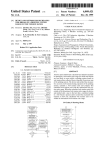
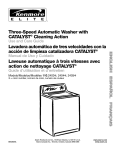
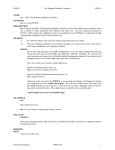
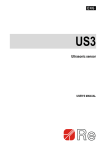
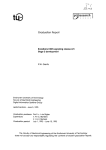

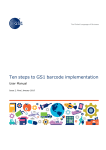
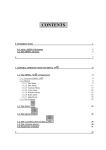
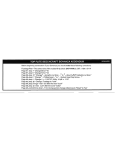

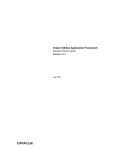
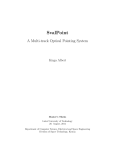

![hank yo_fo buyil_gaSamsung (}a_Te_a ]hs](http://vs1.manualzilla.com/store/data/005691502_1-2e8e29ffb67d0c8f7d0d701e3cb644b7-150x150.png)
